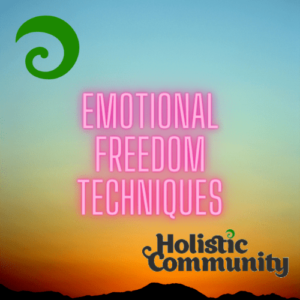 EFT (Emotional Freedom Techniques) is about returning the mind, body and feelings to a state of balance and harmony so you are not limited by negative emotions.
EFT (Emotional Freedom Techniques) is about returning the mind, body and feelings to a state of balance and harmony so you are not limited by negative emotions.
Even though we are ‘designed’ to recover from unpleasant experiences or thought patterns, nevertheless we can be affected by recurring emotions from past events such as relationships, trauma or loss. We can also be affected by ongoing or future events such as work-related stress, interpersonal problems, depression and various kinds of anxieties.
In these examples, emotions can be stuck rather than dispersed. Even if we try to ignore them, they still affect our lives. If people decide to do something about the negative feelings or patterns they may try counselling, see their doctor, or compensate for their feelings in some way. Every approach has its merits, but many people will not have heard of Emotional Freedom Techniques (EFT) as an option for resolving their problem.
How EFT Works
EFT is a very effective yet gentle method of directly balancing the body’s energy system for the feelings that you want to change. It’s a bit like clearing a log that’s blocking a stream where the log represents a stuck emotion in your stream of energy. You don’t have to believe in the theory though, just as you don’t need to know how a car works under the bonnet to drive one. Some people do like to find out more about the theory, while others are happy simply to have their problem resolved.
What EFT involves
Using EFT involves ‘tuning into’ the issue and then tapping with your fingers on specific acupressure points with your fingers. For example if you still carry anger towards someone who has hurt you in the past, you would be asked to think about them, and notice how you feel. But you do not have to relive past events. You just have to be aware that the negative feeling is there. Having therefore ‘tuned in’ to it, you are shown which acupressure points to tap, and what words to say as you do so. (Saying a few things also helps to disperse the emotion from the system).
Having done that you are then asked to think about the person or situation again and check how you feel. Typically you will notice a significant reduction in the intensity of the feeling. If it’s not completely gone then the EFT practitioner repeats the process, bringing the intensity down each time until full balance is restored. All this is done while sitting normally in a chair.
After EFT do feelings return?
Following an EFT session, the dispelled feelings very rarely return. If they do this implies that there is a bit more work to do than the practitioner initially thought. Of course you can still feel angry, fearful or guilty about other things – and it might be appropriate to do so. But if you have thoroughly used EFT for a specific issue, the feeling will not return. Once you have sent the problem ‘downstream’, it does not come back up.
You will still retain the memory of the event you were working on but it will no longer have the emotional charge that it had before. The other thing to say is that there may be more than one emotion that needs to cleared, like more than one log jamming the stream. So using our example there might be the anger towards the person, but there could also be anger towards yourself, or other emotions involved such as guilt or sadness. All of these can be addressed separately, and often when you start to disperse one emotion the intensity of others can start reducing straight away.
EFT original development
The Emotional Freedom Techniques concept was developed in the US in the 1990’s by Gary Craig. EFT roots are in acupuncture, kinesiology and psychology. EFT is now spreading very rapidly in the US and in the UK, where the concept is now used in some specialist areas of the National Health Service.
(Copyright Peter Delves content, Alan Chapman code and design 2004 – www.businessballs.com)
Emotional Freedom Techniques Links:
World Center for EFT – the website of Gary Craig, founder of EFT
